Rick B - Feb 15, 2006 12:47 am - Voted 10/10
Lol @ the cardboard manVery cool. Did you make this cardboard man especially for SummitPost? It could be the new mascotte!
:-))
Scott - Feb 15, 2006 5:40 pm - Hasn't voted
Re: Lol @ the cardboard manVery cool. Did you make this cardboard man especially for SummitPost? It could be the new mascotte! :-))
It was actually made by friends of ours during the birth of our son, and is a cutout of him. The cardboard cutout has been an endless teasing tool for the Grandparents (whom aren't climbers at all on my wife's side, and they think the thought of climbing sounds dangerous and foolish), when we can demonstrate for them all the ways we could take our baby climbing. For some reason they are not ammused.
McCannster - Feb 15, 2006 3:16 am - Voted 10/10
SweetI never thought about that, I should try it sometime.
NewDayRising - Feb 15, 2006 3:17 am - Hasn't voted
greatnice article. i hope more people post articles like these for newbies.
PeterN - Feb 15, 2006 5:53 am - Hasn't voted
super ideaThe only thing I'd change is to fix the cord directly on the rope so you abseil down, then you pull the rope and voila you've got the anchor.
So you can save this ultra long cord.
PeterN - Feb 15, 2006 5:57 am - Hasn't voted
Re: super ideaedit: it could also be very misleading.... Must think again :)
belousov - Feb 15, 2006 9:18 am - Hasn't voted
hm...I see only one trouble in that method. The iron ring could be catched by terrain... in some cases. I thing - it is more surely to use the sling without rings. And the knot must be close to the releasing cord to avoid catching. May be you need to replace the sling after several rappels.
It is very close to self-releasing ice screw placement method.
Scott - Feb 15, 2006 3:41 pm - Hasn't voted
Re: hm...And the knot must be close to the releasing cord to avoid catching.
Yep, that is correct, and that was the note I put in photo 4 section. When I first posted this on the message board months back, people seemed to be confused and thought the climbing rope was tied to the sling or pull cord, which is not the case. I made sure all the knots in the photo appeared apart and the climbing rope too, so people would not get confused, but in real life the knots will be together. I just seperated them so people could see they are seperate and not tied into each other.
Evil Jesus - Feb 15, 2006 3:19 pm - Voted 5/10
Looks safe, but...This looks like a great idea for sport climbing, or use on well groomed or overhanging routes , but I would be hesitant to use it in an alpine environment.
Looks like it would want to get stuck in high angle, but less than vertical terrain, and I would expect that the looped web would dislodge loose rock from above more readily than a smooth rope end.
Perhaps using a single strand of accessory cord with the rap rings on the ends tied with bowlines would be less prone to snagging than a continuous loop of web. And maybe you'd want to double the tagline through one of the rings so that if you just can't get the anchor back you can at least retrieve the tagline.
Keeping the crags clean is a great idea, but if you do this, and wind up getting it stuck, you'll wind up leaving a hundred feet or so of accessory cord along with the sling and rap rings that you were trying to save....kinda defeats the purpose.
Scott - Feb 15, 2006 3:51 pm - Hasn't voted
Re: Looks safe, but...Looks like it would want to get stuck in high angle, but less than vertical terrain, and I would expect that the looped web would dislodge loose rock from above more readily than a smooth rope end.
I wouldn't use this in a lot of loose rock (or if a cliff was covered with trees), but either way, a climbing rope is apt to release much more loose rock than a thin cord.
Keeping the crags clean is a great idea, but if you do this, and wind up getting it stuck, you'll wind up leaving a hundred feet or so of accessory cord along with the sling and rap rings that you were trying to save....kinda defeats the purpose.
We have used this countless times over many years and haven't had a problem. However, most of the times we used it was in the desert where there is little or no vegetation. Some have suggested to avoid leaving the pull cord just in case of snag, that you attach the pull cord to the sling using a third "breakable" piece of rope (that if you yanked to hard it would break and just leave the sling), but these diagrams are just meant to teach the basics of the principle.
Keep in mind that in some areas around here, leaving slings behind (or any fixed anchors) is completely illegal, so this can come in useful.
big_g - Feb 15, 2006 5:54 pm - Voted 9/10
Knot suggestionExcellent walkthrough Scott. I realize you made it as simple as possible so as not to confuse.
I just wanted to point out to people that in practice, I would use a beer knot instead of the water knot though. It is much stronger, no "creep" over time, and has a much smaller, anti-snag profile.
It is called the beer knot because beer is better that water. The only problem is time. It takes longer to tie and the majority of climbers need to have explained what it is and why it is safer. ;)
Scott - Feb 15, 2006 5:58 pm - Hasn't voted
Re: Knot suggestionThanks Big G. I'll have to use that Beer knt more often. Some people I have been with have used it, but old habits die hard for me. Thanks.
Chamonix Man - Feb 15, 2006 6:34 pm - Voted 7/10
No thumbsHow does the little guy in the picture pull the rope? Poor fella hasn't got any thumbs.
mountainmanjohn - Dec 20, 2006 1:13 am - Hasn't voted
Re: No thumbsThats not the only inadequate part of the poor chap ;)
PeterN - Feb 15, 2006 6:37 pm - Hasn't voted
cord lenghtI don't really get it.
Do you carry a 50m cord with you or what ?
Scott - Feb 15, 2006 7:07 pm - Hasn't voted
Re: cord lenghtThis method will not work in all situations as pointed out.
Do you carry a 50m cord with you or what ?
Yes, but usually only 30m.
Consider these two scenarios:
1. Leaving webbing behind (or bolts/pitons) is strictly illegal in some areas. What would you do if this was the case? (In any case, clean climbing isn't a bad thing).
2. Consider a route like the one below:
Route
This one route requires 42 rappels (this route is just used as an example). On a route like this, you also should bring an extra climbing rope in case one gets damaged (very common). Pull cords can also be used to retrieve a rope after doing a single line rappel, hence the need for one less rope, but I won't get into that here on this article. This is just a very basic demonstartion of a method that people can try. It doesn't work in all situations, and unless regulated by law, no one has to use it.
Now, in your opinion, which of the following sounds better for the route above (with 42 raps).
A. Bring three climbing ropes (an extra one for backup) and 150 meters of sling (includes backup) to leave one behind at all 42 drops.
B. Bring two climbing ropes (one for backup), two 50 meter light weight pull cords (backups are still a good idea), and maybe 20-30 meters of sling (including backup).
Chamonix Man - Feb 15, 2006 6:39 pm - Voted 7/10
Seriously though...It would be a useful system in some circumstances. I would consider using Belousov's idea.
Eric Sandbo - Feb 16, 2006 5:41 pm - Voted 10/10
Keep the rings.The rappel rings are essential. Pulling a long rope through from 50m below causes significant wear and heat damage on a bare sling.
The knot is as likely to hang up as the rings, and here's a way to improve that: When making your sling, cut and burn the ends of your tubular web normally, making sure you don't weld the ends shut. Tie a very loose overhand knot a foot from one end. Pinch the end of the webbing at the short end sideways to pop the tubular webbing open, then start cramming the long end into it toward the knot. When it looks like it's in far enough, work the loose knot over the overlapped section, and pull the knot tight. Feel it to be sure you have enough tail to make the knot secure. If it is, tighten it as hard as you can.
You now have a normal web loop, except one tail of the knot is concentric with the rest of the webbing, and the other tail is completely hidden inside. This isn't a new, experimental trick; it's in the older climbing textbooks as a more permanent version of the water knot, that doesn't require retightening. ...but check it now and then, anyway.
old5ten - Nov 3, 2006 7:55 am - Hasn't voted
Re: Keep the rings.The knot mentioned above is actually supposed to be significantly stronger than a regular water knot.
punk_rocker333 - Feb 22, 2006 2:55 am - Hasn't voted
top rope?Say that you wanted to lead a pitch and then leave this setup at the top for top roping with. You could then take the anchor down after top roping without having to lead the pitch, clean gear and rappel again. Would it be safe enough to sling horns and boulders for toproping with this setup, possibly with 2 or 3 of them for more anchor points?


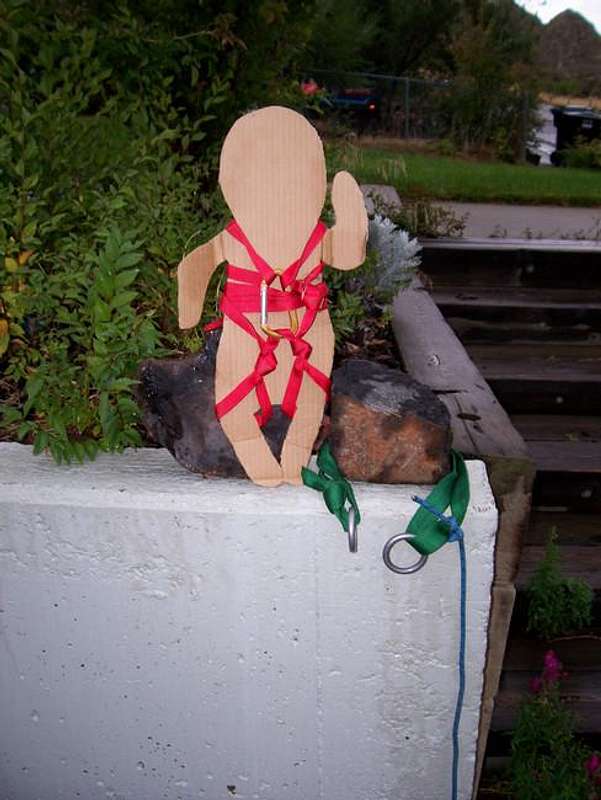

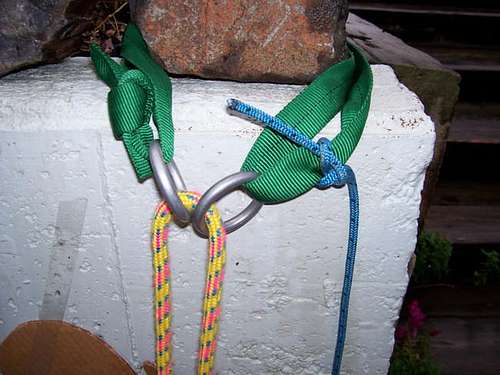
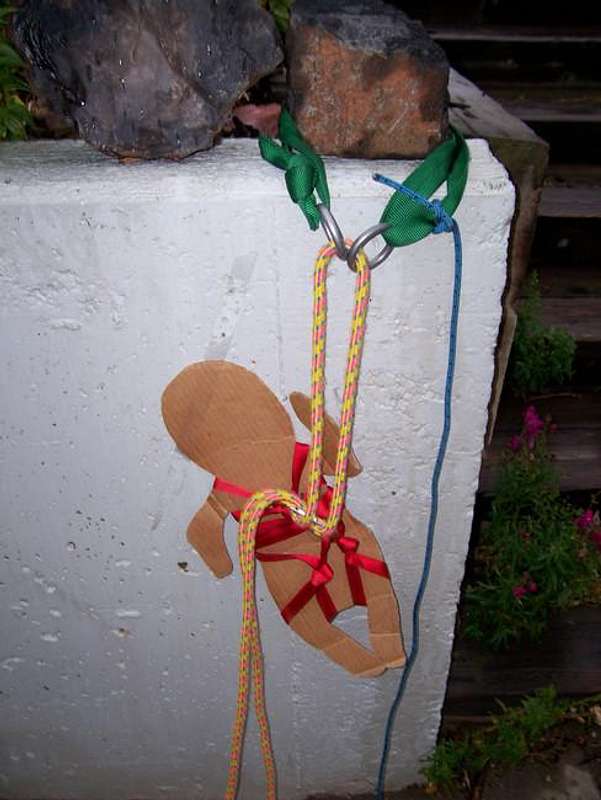
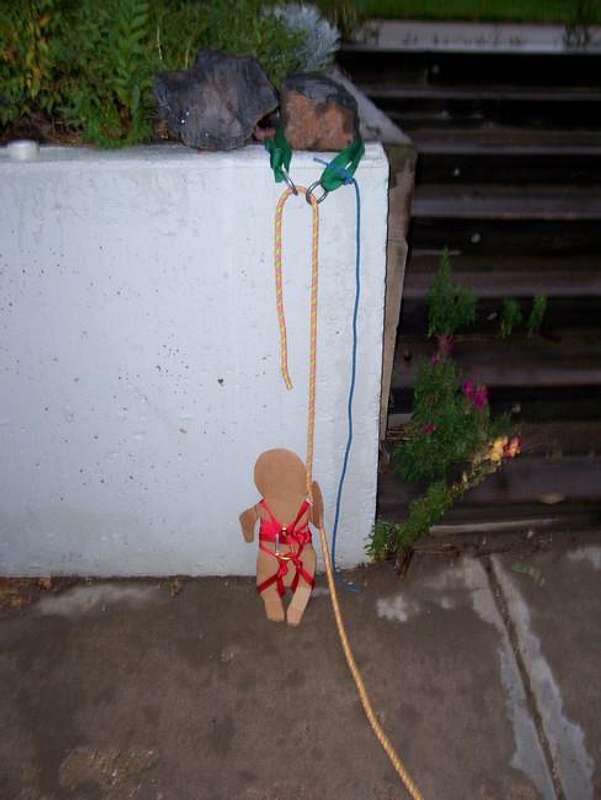
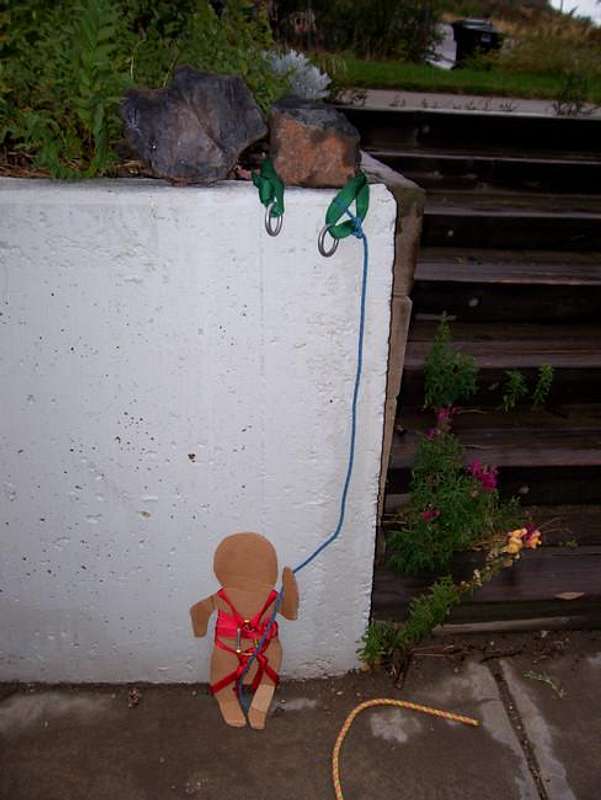
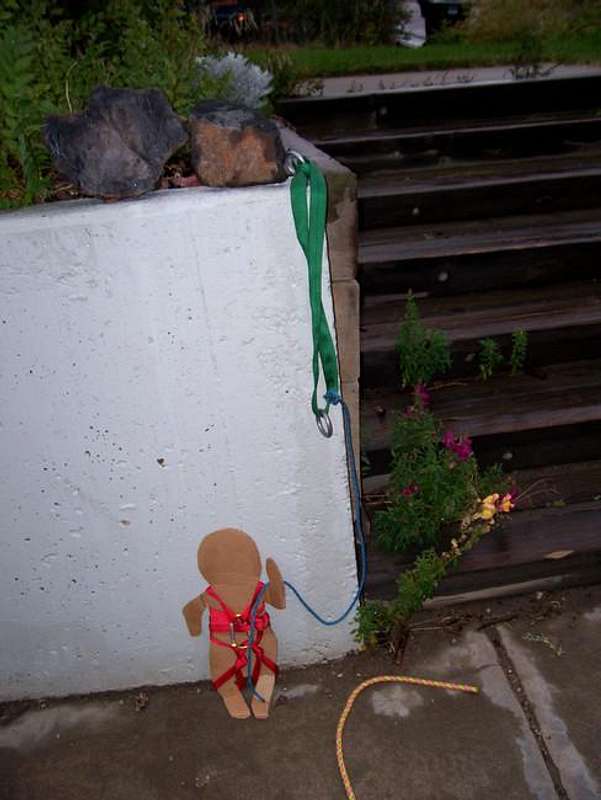











Comments
Post a Comment